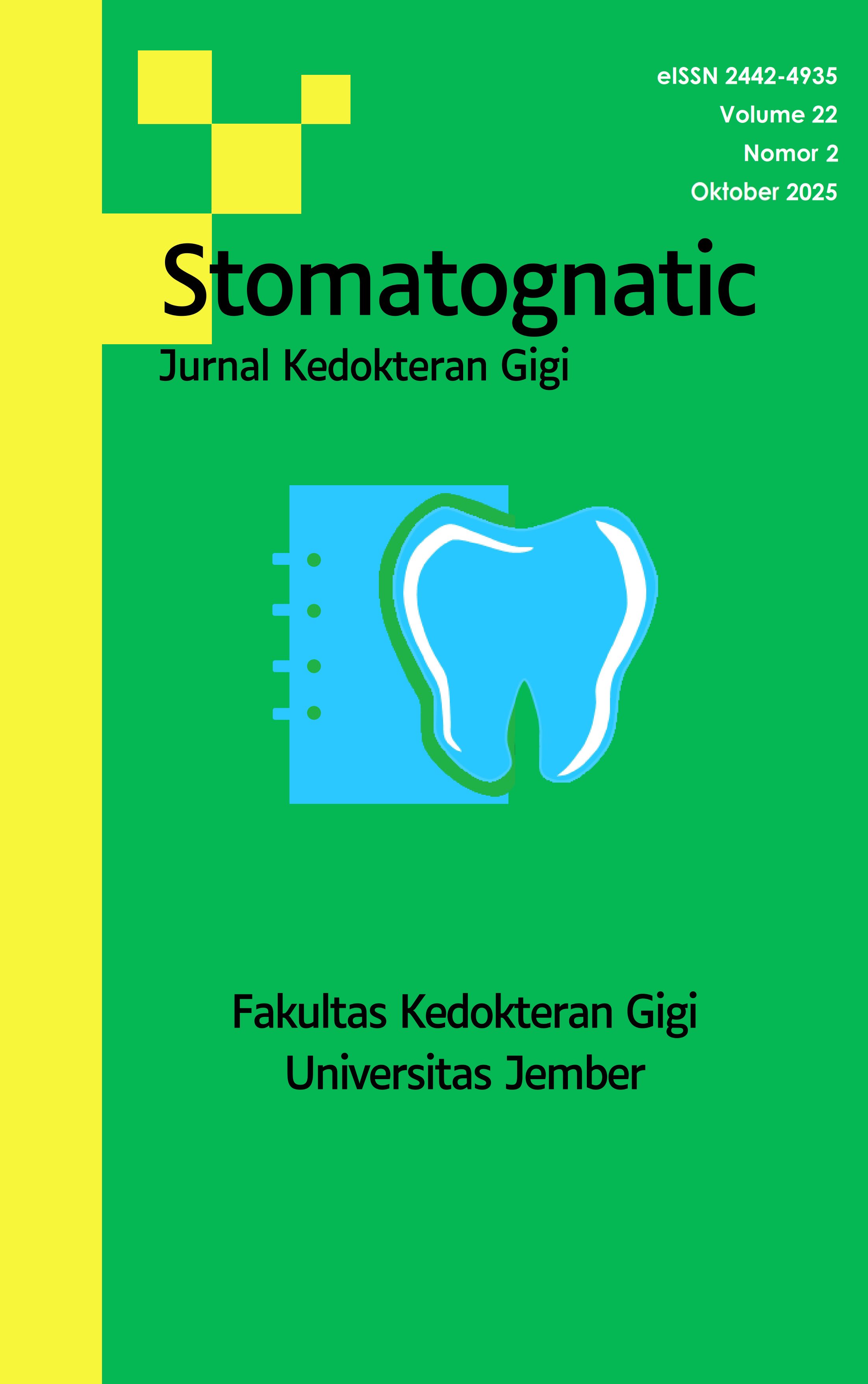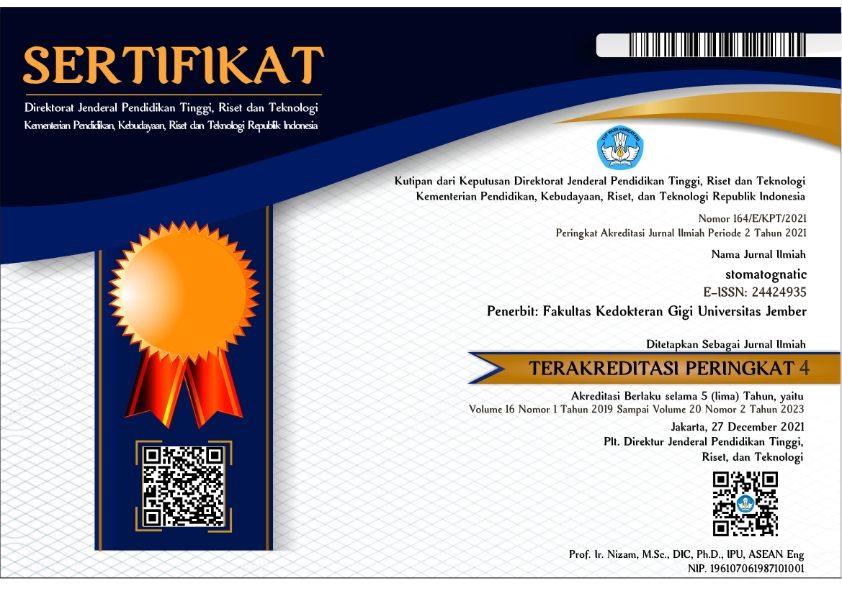Manajemen Perawatan Gingivektomi pada Gingival Enlargement Grade I (Laporan Kasus)
DOI:
https://doi.org/10.19184/stoma.v22i2.53749Abstract
Gingival enlargement is a condition where the size of the gingiva enlarges excessively. In cases of grade I gingival enlargement, the enlargement is limited to the interdental papilla without extensive involvement of the gingival margin. Still, it has the potential to cause difficulty in maintaining oral hygiene and increase the risk of inflammation. Gingival enlargementcan interfere with chewing function and aesthetics. To overcome gingival enlargement, gingivectomy treatment can be performed. This case report aims to evaluate the results of gingivectomy treatment in cases of Gingival enlargement grade 1. The case of a 20-year-old female patient who complained of rough tooth surfaces and gums that often bleed when brushing her teeth. Intraoral examination showed reddish gingiva, BOP 37.5%, gingival enlargement in the upper and lower jaws in the anterior region, soft consistency, smooth texture, no gingival recession, suppuration, or mobility. The Oral Hygiene Index Simplified (OHI-S) measurement results were 3.34 (poor category). Periapical radiographs showed alveolar bone resorption in the coronal 1/3 of the root length horizontally in teeth 33,32,31,41,42,43. There was thickening of the lamina dura and widening of the periodontal space in the mesial-distal area of teeth 32,31,41,42. Case management was carried out by scaling, root planing, and gingivectomy. This case report concludes that the cause of gingival enlargement is inflammation that occurs in the gingiva due to local factors, namely plaque bacteria. Treatment of gingival enlargement that does not shrink after scaling and root planing, then gingivectomy must be performed, which will produce good gingival morphology and aesthetics.







